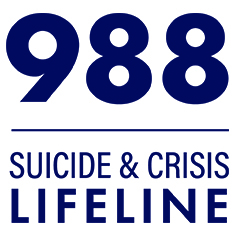Voices That Inspire
May 02, 2013

This month I would like to look back on the important role that survivors of suicide loss have played in the history of suicide prevention. In the late 1990s, I worked for Senator Harry Reid. While helping him prepare for a hearing on mental health and the elderly, I discovered that Senator Reid’s home state of Nevada had the highest rate of suicide in the nation. This marked the moment when I became aware that suicide was a leading cause of death in our nation.
At the hearing, Senator Reid revealed that he had lost his own father to suicide many years earlier. This was the first time he had publically shared this aspect of his personal history. After the hearing, we heard from suicide survivors from all over the country. I read many of these letters and spoke with many of the people who called. They acknowledged Senator Reid’s loss and asked him to help lift the veil of secrecy that surrounded suicide and help put suicide – and suicide prevention – on the public policy agenda.
Over time, many suicide survivors came to Washington to meet with the senator and other elected representatives. Two of these survivors were Jerry and Elsie Weyrauch, who had lost their daughter Terri to suicide. The Weyrauchs founded SPAN USA, which was dedicated to building the political will to address the problem of suicide. They were aware that the United Nations report The Prevention of Suicide: Guidelines for the Formulation and Implementation of National Strategies called for countries to create national strategies for suicide prevention and coordinating bodies to oversee the implementation of these strategies.
The Weyrauchs and the army of survivors and advocates who joined them collected thousands of signatures on petitions calling on Congress to pass mental health parity legislation and create a national strategy for suicide prevention. Once each year, these survivors and other advocates who shared their passion for suicide prevention would sort the petitions by state and congressional district and come to Washington to deliver the petitions to members of Congress. They gave a voice and a face to the statistics about suicide in the United States and inspired the nation to respond.
The Weyrauchs asked Senator Harry Reid and Representative John Lewis (from their home state of Georgia) to introduce resolutions affirming that suicide is a national problem that warrants a national solution and a national strategy. In 1997, Senate Resolution 84 and House Resolution 212 passed. At about the same time, Dr. David Satcher became Surgeon General of the United States. In 1999, Satcher put suicide prevention and mental health on the national agenda by issuing The Surgeon General’s Call to Action to Prevent Suicide.
In 2001 the National Strategy for Suicide Prevention: Goals and Objectives for Action (NSSP) was published. In 2004, thanks to the courageous efforts of Senator Gordon Smith, the Garrett Lee Smith Memorial Act was signed into law by President Bush. This legislation (named after Senator Smith’s son Garrett, who died by suicide) helped states, tribal nations, and colleges create youth suicide and early intervention programs.
In 2010 the National Action Alliance for Suicide Prevention was created to oversee and advance the implementation of the NSSP, champion suicide prevention as a national priority, catalyze efforts to implement high-priority objectives of the NSSP, and cultivate the resources needed to make and sustain progress. In 2012 the NSSP was revised. That revision includes a goal (Goal 10) to “Provide care and support to individuals affected by suicide deaths and attempts to promote healing and implement community strategies to help prevent further suicides.”
Suicide survivors, like the Weyrauchs and countless others who joined the movement to advance suicide prevention, were the catalysts that led to the first NSSP; the creation of the Action Alliance for Suicide Prevention; and the elevation of postvention to the position it now holds in the field of suicide prevention. The efforts of the Weyrauchs and other survivors of suicide loss remind us how important it is to ensure all voices of those affected by the tragedy of suicide are included to create a truly national and truly comprehensive effort to prevent suicide. The voices of those touched by suicide loss have inspired a nation to action and inspired me to dedicate my professional career to the prevention of suicide.
Resource Note
SPAN USA continues its advocacy work as part of the American Foundation for Suicide Prevention. For information on these activities, visit the Suicide Prevention Advocacy Network section of the AFSP website.
Other resources for suicide survivors can be found in the Suicide Loss Survivors section of the American Association of Suicide Prevention website and the Coping with Loss section of the Suicide Awareness Voices of Education (SAVE) website.
